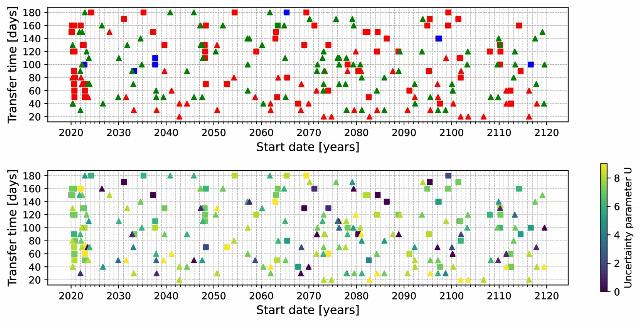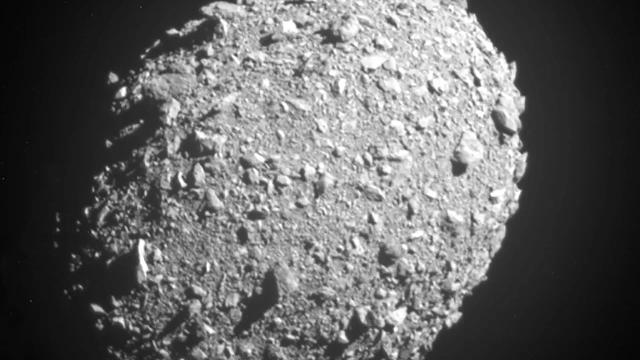If humanity is going to colonize some planets of the Solar system, it will have to solve a number of difficult tasks. Among them is radiation. A group of astronomers from Ukraine has found a solution to this problem. Scientists have described a way that, in their opinion, will allow people to quickly and, most importantly, safely reach Earth's neighbors — Mars and Venus. We are talking about asteroids that regularly fly between the Earth and these two planets.
Protecting crew members from cosmic radiation is one of the most difficult tasks that must be solved before scientists send people on a long—term manned space flight. The threat to human health in space is represented by the so—called cosmic radiation storm (solar proton event, solar particle events), which is caused by a powerful flash and plasma release into the Sun, as well as galactic cosmic rays (galactic cosmic rays) - high-energy particles coming to Earth from the Galaxy.
Experts have been studying the effects of radiation on our body for a long time and note its detrimental effect on the central nervous system. Thus, Francis Cucinotta, scientific director of the NASA program for the study of the effects of radiation on humans, wrote in one of his studies that during space flight, the risks of causing damage to health are doubled and even tripled. For example, changes in cognitive functions occur, including deterioration of short-term memory, decreased motor functions and behavioral changes that can affect a person's performance.
However, we note that a number of scientists hold a different point of view, and Russian researchers in one of their works even talked about improving the cognitive abilities of animals after exposure equivalent to cosmic radiation.
Today, the only way to protect against radiation in space is shielding. Special screens allow you to reduce potentially harmful radiation levels to safe ones.
In 2011, such a curtain screen with a thickness of up to 10 centimeters was installed along the outer wall of one of the cabins of the Russian segment of the ISS. According to the assurances of domestic experts, the technology can reduce the effects of radiation on the body by 20-60 percent.
However, if screens are installed on spaceships designed for long-range flights, the mission budget will increase significantly, which may scare off potential investors and sponsors. Therefore, some researchers are looking for alternative solutions to the radiation problem.
One of these ideas was proposed by two Ukrainian astronomers Arseniy Kasyanchuk and Vladimir Reshetnik from the Taras Shevchenko National University. Their alternative is to travel inside an asteroid, as the researchers described in an article published on the website of the electronic archive of preprints arXiv.org . Some asteroids are quite rich in silicates, which absorb particles of cosmic rays and solar wind quite effectively.
The authors of the work studied the orbits of 35 thousand near-Earth asteroids to find out whether any of them can be used for interplanetary flights in the period up to 2120. In particular, they were looking for asteroids that can consistently approach Earth, Mars and Venus. Moreover, the objects had to be large enough so that a spacecraft with people on board could easily board it and then fly away.
As a result, astronomers have compiled a list of 120 asteroids, some of them fly past planets (Earth — Mars, Mars — Earth, Earth — Venus, Venus — Earth, Mars — Venus, Venus — Mars) regularly, once every two to three years, and others only once a century. There are two objects in this list that consistently approach three planets, and 10 with several consecutive paired approaches to planets over a period of 100 years.

Near-Earth asteroids, which, according to the authors of the new work, can be used to get from Earth to Mars and Venus in an average of 180 days. In the upper diagram, the color indicates a group of near-Earth asteroids: Apollons (red), Cupids (blue), Atons (green), Athyres (purple) / @ Volgymyr Reshetnyk and Taras Shevchenko
According to the plan of Kasyanchuk and Reshetnik, astronauts should travel on one asteroid, and return on the second, flying in a different direction. According to calculations, the flight time to Mars or Venus will average up to 180 days.
"What is the advantage of such a solution — it will give you the opportunity to visit both planets in one mission. We calculated that in 2079, one asteroid will approach first the Earth, then Venus, and then Mars. This journey will take 230 days. In 2080, another asteroid will fly in the opposite direction, astronauts will be able to return home safely," Reshetnik explained.
Everything is not so smooth with the project of Ukrainian astronomers. There are many disadvantages, and not all asteroids chosen by scientists are suitable for this kind of mission. For example, to land on the surface of an object, the ship's pilots will need to select an asteroid flying at a suitable speed, which in itself is quite a difficult task.
There are asteroids that fly at speeds up to 30 kilometers per second, and there are those that fly at a speed of two kilometers per second. If you choose the first option, you will need an "insane amount of fuel", which makes the mission itself impractical.
Ukrainian experts suggested traveling inside the asteroid. Another problem: how to drill a tunnel in it? People didn't do anything like that. From a technical point of view, it is extremely difficult to bring such an idea to life.
In any case, the project proposed by astronomers from Ukraine is unlikely to be feasible. At least in this century.

